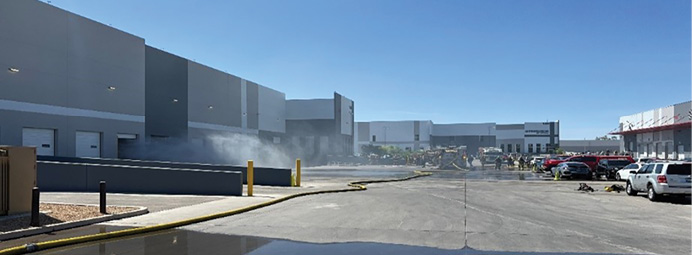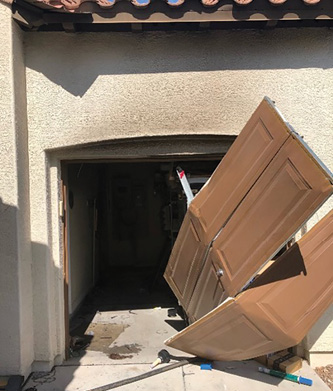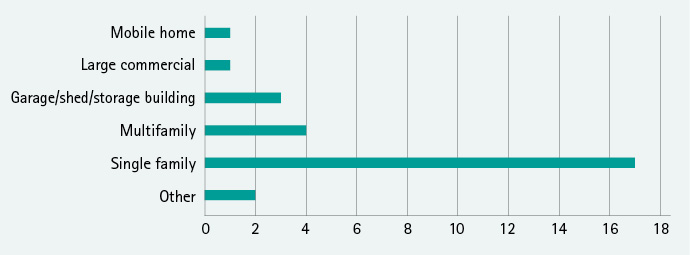Regional Fire Department Collaboration on Battery Energy Storage Systems (BESS)
Energy Fires | By TIM KREIS
One ongoing challenge within the firefighting industry is keeping pace with changes that impact fire protection. In my career, these changes have included the emergence of photovoltaics in the built environment, hybrid vehicles, midrise building construction, and more. In more recent history, we have had to manage battery energy storage systems (residential, commercial, and utility grade), electric vehicles, and micromobility devices.
About four years ago, the Phoenix (AZ) Fire Department and our regional partners within the automatic-aid system took steps to address battery energy storage systems from the emergency response and fire code enforcement perspectives. This effort led to developing a regional standard operating procedure for governing how all 30 municipalities and associated fire departments within our shared system would address emergency responses to these systems. It also addresses related training.
At the same time, the Phoenix Fire Department took the lead in developing amendments to Chapter 12 of the International Fire Code, adopted by the city of Phoenix. These amendments cover essential protections for battery energy storage systems, including the following:
- Fire-permitting requirements.
- Signage for responding personnel.
- Standard language for premises alerts.
- Hazard mitigation analysis.
- Large-scale fire testing.
- Fire remediation.
- Forensic analysis.
- Vehicle impact protection.
- Prohibition of combustible storage.
- Separation and segregation of battery systems and arrays.
- Electrical disconnects.
- High-density fire sprinklers.
- Gas detection.
- Ventilation.
- Spill control.
- Explosion control.
- Emergency energy release requirements.
Thanks to strong regional partnerships, our partnering municipalities ultimately adopted these code amendments. That’s a big win for firefighters and for public safety.
Next Steps
Knowing that our work to pursue our mission for the community is perpetual, we took another look at the challenges of emerging technologies, specifically lithium-ion batteries. We called a meeting with key leaders within our organization, using the community risk reduction model as our guide.
Leaders in attendance included our shift commanders as well as representatives from public affairs, community risk education, fire investigation, and fire prevention. The meeting was to identify opportunities to do more with lithium-ion batteries, plainly considering battery energy storage systems, electric vehicles, and consumer products.
Afterward, we worked on coordinating revisions to regional standard operating procedures and training, built new public education programs, found more fire prevention opportunities, and revised our fire investigation efforts.
Getting the Message Out
One of the priorities of these efforts was making them regional. We wanted our actions to fully align with the other departments within our system. During the meeting, I asked the fire investigations team to look at how we investigate fires. My goal was to determine whether a lithium-ion battery was a potential cause—and to look at how we manage our efforts.
In addition, knowing that the public would be seeking information on such fires, we wanted to share the information we captured to the extent possible. We knew this would help increase awareness about how lithium-ion batteries function as well as the dangers associated with them. Fast forward a few months, and the team exceeded my expectations.
We know that data gathered during fire loss investigations is essential. Origin-and-cause investigations are the foundation of targeted policy development, inspection activities, public education programs, and fire code revisions.
In June 2023, the Phoenix Fire Department completed statewide training focused on investigating fires that may involve lithium-ion batteries. The class was delivered in partnership with experts from the federal government’s Bureau of Alcohol, Tobacco, Firearms, and Explosives. More than 120 participants attended, representing private insurance companies and fire and police investigators from 53 agencies across the state.
Following the training, all participants now support a statewide data collection effort to better understand lithium-ion battery fire data. This information can be used to improve awareness and preparation activities for public safety messaging, firefighter safety, training, and code compliance.

(1) Firefighters use a medium-sized portable monitor placed inside the building for high-volume hydraulic ventilation. In coordination with other tactics, using hydraulic ventilation with a monitor placed inside the building is an effective means of ventilating cold smoke out of the building. (Photos by author.)

(2) An electric vehicle fire inside a building. Firefighters coordinated efforts to cool the batteries and remove the vehicle from the building.

(3) Once the vehicle was removed from the building, firefighters cut off the roof and placed it in a dumpster. They placed a layer of sand in the dumpster, loaded the vehicle inside, and buried the vehicle in sand. This mitigated anticipated ongoing thermal runaway in the lithium-ion batteries.
A Look at the Data
We are proud of this statewide collaboration and the associated data collection plan to capture lithium-ion battery fire information. In July 2023, with just over a month of reporting, 37 lithium-ion battery fires entered the new data collection system. Three included reported injuries or fatalities. The data we collected covered the types of structures involved (Figure 1) as well as the types of devices involved, which follow:
- Battery energy storage systems: 2.
- Electric vehicles: 6.
- Micromobility devices: 11.
- Portable electronic devices: 2.
- Power tools: 8.
- Remote-powered devices: 2.
- Other (vape pen or other device powered by lithium-ion batteries): 6
Here are a few additional stats about the circumstances and setting for the lithium-ion batteries at the time of each incident, the vast majority of which took place in residential settings:
- Device was inside at the time: 66%.
- Device was outside, in direct sunlight: 5.
- Device was not charging at the time: 53%.
- Fire spread to a structure: 76%.
Additional Notable Incidents
July 2, 2023, 8:13 a.m.: A resident was testing a prototype energy storage system. The device was installed in the garage of a single-family residential structure. The device exploded and damaged the home, including the garage door being blown off the building.
July 23, 2023, 1:56 p.m.: A large electric truck that was previously damaged from a fire reignited.
July 24, 2023, 6:26 p.m.: A mobile solar panel and lithium-ion battery packs from a disassembled electric vehicle being used to power a portion of a single-family home ignited.
Also notable: Three lithium-ion battery fires reported in July involved an e-bike or e-scooter. For all three, the battery and device were in the garage, and two of the three were charging at the time of the incident.
If your organization is not already collecting data on lithium-ion fires, consider starting this practice.

(4) A residential energy storage system in a garage exploded, resulting in damages.
Figure 1. Structure Type

Figure 2. Lithium-Ion Battery Fire Data Collection Form

A Helpful Starting Point
The Phoenix Fire Department and partners worked hard on developing a data collection form (Figure 2).
Our partners in this initiative have already started expanding to other states. We know that the more data we collect through investigations, the better off we are as an industry. These efforts will reduce the risk of fires, guide further safety efforts, and improve firefighter training and operational measures. We intend to build further relationships for investigation and reporting efforts across the nation.
Data sharing will be one of the best ways for us to make a difference in this effort. The intent of this article is to share what we are doing specifically with regard to fire investigation efforts and reporting on lithium-ion battery fires. Several fire departments have adopted the process and we encourage others to do the same.
If you’re interested in using this process or for more information, contact the Phoenix Fire Department (tim.kreis@phoenix.gov or jennifer.hill@phoenix.gov).
Author’s note: Thanks to Assistant Chief Shelly Jamison; Deputy Chiefs Justin Alexander, Paul Moore, and Joe Meier; Division Chief Dan Cheatham; Deputy Fire Marshal Brian Scholl; and Criminal Intelligence Analyst Jennifer Hill for contributing to this article.
TIM KREIS has served with the Phoenix (AZ) Fire Department since 2002 and is an assistant chief assigned to the executive staff. He oversees the Community Risk Reduction Division, which includes the Office of Emergency Management, Community Risk Education, Homeland Defense Bureau, and the Fire Marshal’s Office. He has a bachelor of science in fire administration and a master of arts degree in organizational leadership. Kreis served as an adjunct faculty member for the fire science programs at Phoenix College and Paradise Valley Community College and has been an instructor at FDIC International.

